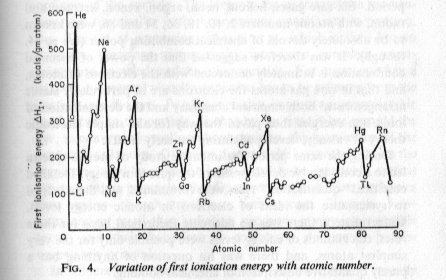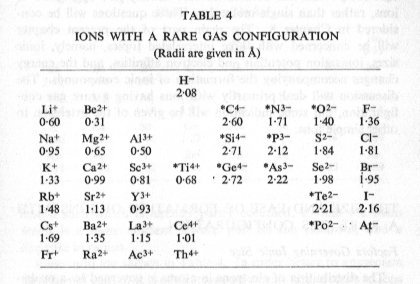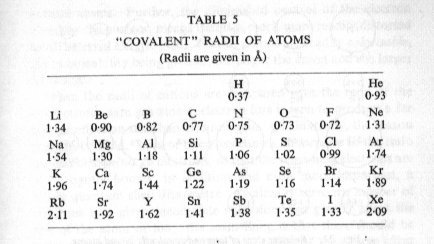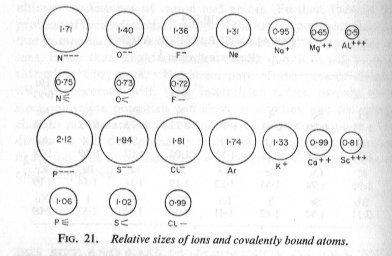-
Posts
18311 -
Joined
-
Last visited
-
Days Won
104
Content Type
Profiles
Forums
Events
Everything posted by studiot
-
Hello dru, I will move you along a bit, perhaps swansont or someone will help with the next bit. You are on the right lines, but I don't know where you got that formula from, which may be why you have calculated the wrong value for acceleration. As an old dog I use [math]s = ut + \frac{1}{2}f{t^2}[/math] Where s is distance, u is initial velocity, f is acceleration and t is time. In this case [math]u = 0[/math] ; [math]s = 1.2[/math] ; [math]t = 0.8[/math] all given. Note this is just stated for 'the system' as all parts of the system remain connected and the rope does not go slack. Putting the numbers in gives [math]1.2 = 0 + \frac{1}{2}f\left( {\frac{8}{{10}}} \right)\left( {\frac{8}{{10}}} \right)[/math] Now I am going to labour this point a bit since it helps the arithmetic. You do not need a calculator and for school work it is often best to follow this pattern. get rid of the fractions and decimals thus [math]2.4 = f\left( {\frac{8}{{10}}} \right)\left( {\frac{8}{{10}}} \right)[/math] Note the way I have used 8/10 instead of 0.8 [math]240 = f\left( 8 \right)\left( 8 \right)[/math] [math]240 = 64f[/math] finally [math]f = \left( {\frac{{30}}{8}} \right)[/math] metres per second per second. I would suggest leaving the acceleration as 30/8 for the next part. School examples generally drop out easily like this.
-
The other part of my OP was to thank you for all the Science announcements you have alerted us to lately.
-
The Carl Schwarzchild you mention was born in 1873. The quote I gave was from a paper read out to the Royal Society by Henry Cavendish in 1783, on behalf of Michell.
-

Can anyone recommend any educational material
studiot replied to ALine's topic in Applied Mathematics
I assume you mean the general development of models (which are mathematical) of something which is not, such as a mathematical model of heat loss from a building. As opposed to physical models of something mathematical as in orgami, stellated dodecaherons etc? (That would be Mathematical models by Cundy and Rollet) So A gentle introduction Mathematical Modelling Berry and Houston Edward Arnold More advanced (University level) Macmillan Guide to Mahtematical Modelling Edwards and Hanson Macmillan Most advanced Mathematics of Models - continuous and discrete systems Griffiths and Oldknow Ellis Horwood After this you will need to look in subject specialist books (usually a particular engineering subject, but also statistics.) Does this help? -
Good because this was off topic here. I thought some might be interested in just how old the original proposal about black holes is.
-
Since beecee has been feting us lately with scientific announcements I thought I would offer the original announcement about the theoretical proposal of black holes. So we can celebrate the latest discoveries nearly 250 years on.
-

Michelson Morley experiment is no confirmation of Special Relativity
studiot replied to vanholten's topic in Speculations
There seems to be some historic confusion here. The Michelson original interferometer was later shown (by Lorenz) to be incapable of the accuracy required to measure second order effects. This equipment failed to produce the expected interference. This was then improved by collaboration with Morley (by increasing the length of the rotating arms) to be more sensitive. Again there was a null result. As already noted these experiments were intended to measure the speed of light and detect the effects of the ether. Lorenz and Fitzgerald then interpreted the result by introducing length contraction as an empirical fact to explain the null result. But it remained an experimental observation only. There was no theoretical basis provided. Einstein then derived this same value of contraction rom theoretical considerations alone when he introduced Special Relativity. -
The original OP question is simply refuted by noting that Christianity (or even Judaism) is a pretty late comer in the history of religions. Any earlier religion could not possibly have split from Christianity, which did not exist contemporaneously.
-
You have four problems to consider with this proposal. Firstly charge. For every electron you expel your rocket gains a unit positive charge. The greater these charges add up to the harder it becomes to expel another electron, which take more energy. So your drive gets less and less efficient, the more you use it. Secondly what would the effect (fate) of a hugely positively charged rocket be when it arrives at its destination? Flash destruction? Thirdly, as already mentioned, an electron is approximately 1800 times less massive than a proton or neutron. So say you rocket was made of carbon and had a mass of 100kg, how many electrons would you need to expel to drive it? Finally in order to accelerate the electrons you would need a source of energy in the rocket so the drive would not be a free lunch scenario.
-
Yes we did tasting of acids when we started chemistry. Yes helium is small enough to leak through even the fabric walls of a balloon. That is why they are silvered it is more than advertising puff. Another example is methane which leaks through concrete floors but collects under steel roofs. Methane is generated in old rubbish tips so this is a problem as it is imflammable and can get to explosive concetrations.
-
Fair comment, I did say there were two possible meanings. The second one is context sensitive and I prefer not to use it. Consider a pendulum with a rigid arm. When it is hanging down with the bob vertically below the pivot it is in a condition of lowest potential energy compared to any other position. You may consider the position as meaning a configuration of the system. If the bob is not actually moving, but just hanging there then there is no kinetic energy. The bob could hang there indefinitely unless disturbed by an outside force. The system is in equilibrium. If disturbed slightly the bob will rapidly return to the equilibrium position (although it will overshoot and thus oscillate). Such an equilibrium position is called a stable equilibrium position. Now consider the bob vertically above the pivot. The bob could, in theory remain there indefinitely because it is also in equilibrium. But this equilibrium is different in two ways from the lower configuration. Firstly if the bob is disturbed, even minutely, it will accelerate rapidly away from this equilibrium position. This is called unstable equilibrium. Secondly the bob has greater potential energy than in the lower position. The system now moves towards the configuration of stable equilibrium. In general, a configuration of unstable equilibrium has greater potential energy than one in stable equilibrium. So we say that moving from an unstable to a stable equilibrium configuration is 'energetically favourable'. But watchout because in this case the system does not evolve (or loose) energy. The loss of potential energy is matched by the gain in kinetic energy of the bob. So in my first case the energy of the system is diminished by energy favourability, so the loss of energy provides the 'driving force' causing the change. In the second case there is no driving force internal to the system that causes the change.
-
Could have one of two meanings. Firstly it usually means that the process can proceed by itself and thus there is net evolution of energy. This is called spontaneous. If the process requires energy then energy to proceed then it is driven or forced and will not be spontaneous. In this way it is not 'energetically favourable'. Remember also that a closed system does not means closed to energy. It means closed to mass exchange. An isolated system is closed to both mass and energy exchange. You can also have a pseudo closed system (flow system) where the same amount of mass enters a system as leaves duting the process so there is no net exchange of mass. This is how heat exchanger work. Does this help?
-

Self learning Theoretical Physics?
studiot replied to Elendirs's topic in Suggestions, Comments and Support
I think the OP is just making a clean start, but actually selling himself a bit short. For instance the books I recommended include some classical basics and background. They also include some integrals etc. But you only need to know what an integral is to study applications of integrals. You do not need to be an adept at tricky formulae since all the integration needed will be carried out in the text. But you can't have zero maths and Physics skills and be successfully studying neuroscience and statistics at university level. -

Self learning Theoretical Physics?
studiot replied to Elendirs's topic in Suggestions, Comments and Support
Another good series of meatier Physics texts is the Manchester Physics Series. Most of these can be navigated with A level Maths. Start with the Properties of Matter by Flowers and Mendoza. (an older one) https://www.google.co.uk/search?source=hp&ei=fJuoXJaFCsyckwWUr63AAg&q=Manchester+Physics+books&btnK=Google+Search&oq=Manchester+Physics+books&gs_l=psy-ab.3..0i22i30.1604.14018..14986...0.0..0.244.2230.20j2j2......0....1..gws-wiz.....0..0i131j0j0i22i10i30.cjeLX2_rGXA -
Printer motors are often of the stepper motor type as opposed to the continuous rotation type. Stepper motors require a fixed pulse of energy to advance one step so will not thank you for much variation of voltage in their drive. Continuous motors can be speed reduced by voltage reduction at reduced power/torque output. A rheostat is a series device which shares the available power with the load by dividing the voltage, but is susceptible to being damaged by overcurrent at low resistance settings, since it always take the fully current drawn. A potentiometer is a parallel device that shares power by always suffering the full input voltage but only receives a proportion of the current, ie it divides the current.
-
I just rushed these to get something out as it was after midnight with me. The important point was that atomic sizes, by themselves, are relatively uninteresting so I wanted to widen to ionic radii and also bring in molecules and regular solids (crystals) - and thus bond lengths where size has vastly greater importance. Your list of questions seems to bear that approach out since, for instance, materials scientists almost never deal with individual atoms. However I have a few questions. Firstly is this list of question something you are preparing as a teacher for your students, or has the list been prepared for you as a student? I am assuming, from your post, that you are teacher and will therefore understand when I say that size in atoms will allow calculations about spin and orbital angular momenta but not rotational and vibrational data like with molecules, for spectroscopic purposes. You will further understand that size indicates lattice distortion in a semiconductor or other material, which in turn indicates atoms that be substituted in the lattice or incorporated in the lattice interstitial voids. So what is the discipline that this is intended for?
-

Self learning Theoretical Physics?
studiot replied to Elendirs's topic in Suggestions, Comments and Support
Yes it's possible to achieve a realistic overview, but remember that even Physicists specialise so don't expect to cover it all. This leads nicely to the following suggestion. There have been a number of series of slim monographs from various publishers on a particlar topics in Physics. Cambridge University and Oxford University both do one, but they are both quite demanding on the Mathematics (they have some mongraphs for that as well) Other publishers have some easier ones eg this one from Routledge https://www.amazon.co.uk/Relativity-Physics-Student-R-Turner/dp/0710200013 The series includes Quantum mechanics, Electricity and Magnetism and Classical Mechanics, EM waves which are all good. Allen and Unwin have a good series in mathematics like this. These books can be obtained second had quite cheaply and you can alsway ask here for more detailed help. As a biomedical person I also include this book as it compares how Nature and Man achieve similar mechanical objectives in the real world, non mathematically. https://www.amazon.co.uk/s?k=cats+paws+and+catapults&i=stripbooks&adgrpid=48840195290&hvadid=259123799715&hvdev=c&hvlocphy=1007149&hvnetw=g&hvpos=1t2&hvqmt=e&hvrand=11590526212339812244&hvtargid=kwd-314868215186&tag=googhydr-21&ref=pd_sl_6gzxaaawpe_e Just to round it all off, I would accompany this with a good all round general physics book such as https://www.amazon.co.uk/s?k=cats+paws+and+catapults&i=stripbooks&adgrpid=48840195290&hvadid=259123799715&hvdev=c&hvlocphy=1007149&hvnetw=g&hvpos=1t2&hvqmt=e&hvrand=11590526212339812244&hvtargid=kwd-314868215186&tag=googhydr-21&ref=pd_sl_6gzxaaawpe_e -
Both Islam and Christianity use such passages to justify hundreds of years of atrocity against others.
-
Hello Karen I think its a little more complicated than that, you should also consider ionic radius and ionisation energies. Here are some trend diagrams. They are usful in studying bonding and structural arrangements.
-
I'm very glad to say that I have learned much from others on Scienceforums, and I can't see any shame in that, only pleasure. My comment was addressed to those who either post offensive material or are careless about their own personal data and perhaps post silly photographs or comments due to overexuberance.
-
A good starting place is the question "Can you/how do you have voltage without current or current without voltage ?" This bring home the idea tha Ohm's law (pun intended) does not cove everything.
-
Sounds remarkably similar to the invective of hate preached by some Mullahs of another Religion. Are you sure this is not just another construct of Man at his worst?
-

Intriguing Finds at KPg boundary in North Dakota
studiot replied to Intrigued's topic in Science News
Thank you for your picture Michel, here are my thoughts. Firstly I have identified quite a few fish roughly perperndicular to the general trend, although I agree the preponderance is parallel to the shoreline. Secondly this stretch of water is clealy not open. That is it is a narrow channel between two shores, perhaps an estuary. Such narrow channels have currents and/or tidal streams that flow parallel to the shorelines so there will be a stronger parallel distributing mechanism as compared to a plain shore set against open water. Even a plain shore will have curves and inlets that are again roughly perpendicular to the main trendline of the shore, thus providing opportunity for some fish to be distibuted nearly perpendicular to others. Such a promentory can be seen Above the E of my added wording. The distribution mechanism and resulting orientation is an interesting point you have raised, but is there enough information in the study to draw any firm conclusion? -
Thanks to all contributing here. It's gratifying to see so many are interested in 'getting it right', rather than just spouting platitudes. Two thoughts occur from the responses. Firstly to the moderator camp in general I would observe that I have been told (more than once) that this forum prides itself on not immediately rejecting propositions. I can however, see clear water between the response to the proposition in question and many of those I have thought went on too long. This water is the ocean between the continents of religious belief and belief in some false science or other. I have been told that we should not jsut dismiss (religous) preachers but challenge them and many pages of threads have been devoted to this before they are finally closed or everybody gives up through exhaustion. Secondly I still feel that only lip service has been paid to the lesson that could be learned here - for future threads - I am not asking to reopen the one in question, Although I have, in the past, successfully asked for someone's thread to be reopened.






